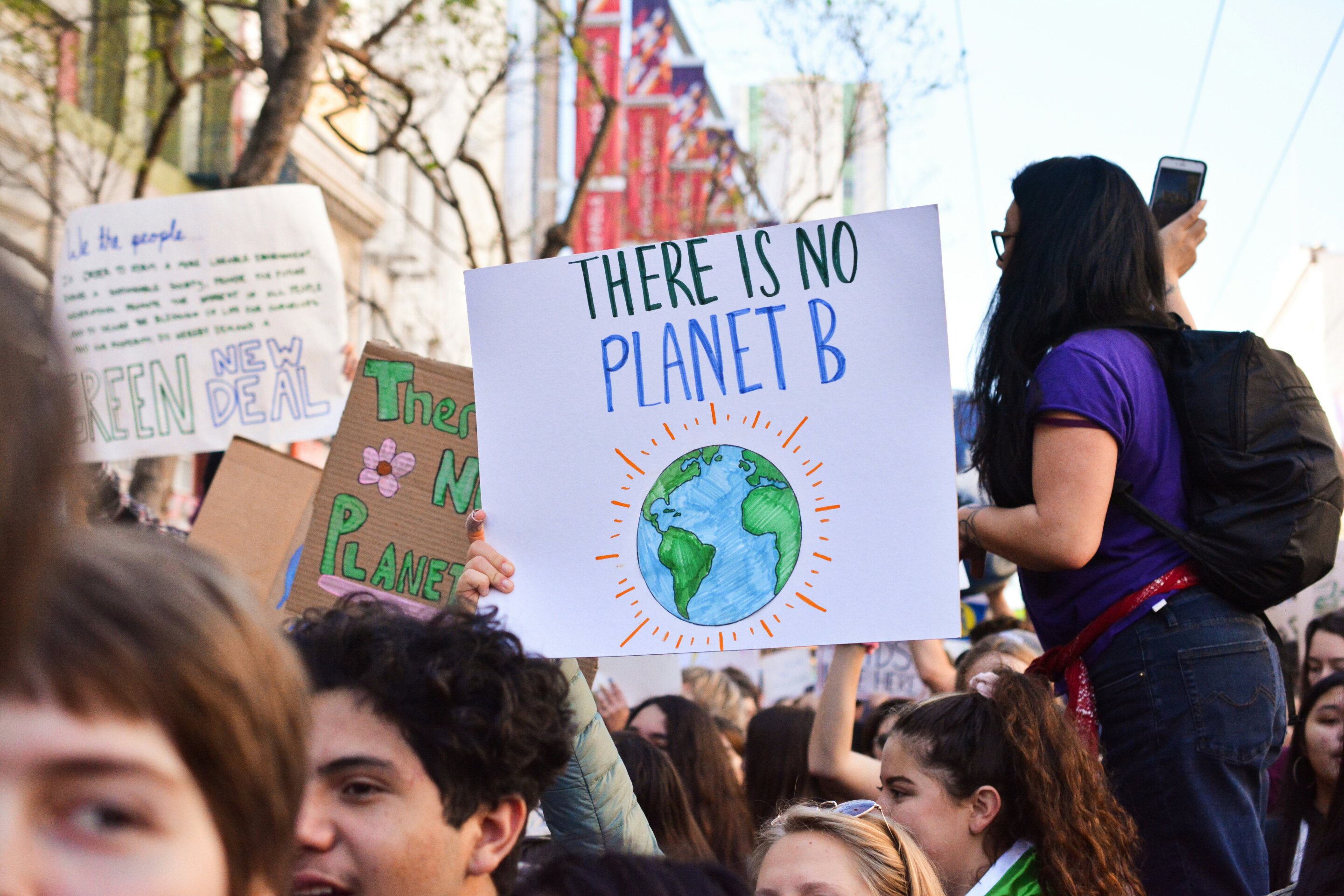Supporting young people in transforming their fear of climate change into climate action

Image credit: Unsplash/CC0 Public Domain
× close
Image credit: Unsplash/CC0 Public Domain
Young people today are living with the existential threat of climate change. They are experiencing record-breaking heatwaves, devastating storms and rising sea levels. In addition, young people are observing that government and industry actions are falling far short of what is needed to address the climate crisis, leaving many young people feeling powerless and hopeless about the future.
“Many teens are frustrated and worried that adults are not acting responsibly. They will have to live with the consequences of the poor decisions that are being made now,” says Erin Seaton, a lecturer in education at Tufts University who specializes in mental health in schools. “It’s their future that’s at stake, and they feel like they have no control.”
Climate anxiety – an umbrella term for feelings of fear, anxiety, sadness, anger, helplessness and guilt related to climate change – is an understandable response to the current state and scale of the crisis. People of all ages experience it, but it is particularly common among young adults. If left unaddressed, climate anxiety can be paralyzing and debilitating, and can exacerbate existing mental health issues. But there are ways to help young people deal with these feelings.
“It needs to be a priority in our schools and communities,” Seaton said. “By teaching students about climate, we can give them not only a better understanding of the issues, but also more agency over their own impact and actions. It can be reassuring to know there is something you can do.”
Recognize the reality of climate change
“When we talk to young people about climate, we have to acknowledge the bad side too. The reality is not always bright and cheerful,” says Ann Ward, education and outreach specialist at the Tufts Office of Sustainability.
Ward spent nearly two years studying how young climate activists in Boston – particularly the Sunrise Movement, a youth-led organization that advocates for action on climate change – deal with their emotions around climate change. “It’s a mistake for adults to ignore that or try to tell kids that we expect them to be hopeful.”
Anxiety in adolescents can often arise from the fact that they feel that a problem – for example an upcoming exam – is too big and they do not have the necessary skills to deal with it.
In such cases, reminding young people that the problem is not as big as it seems – it’s just a test – and helping them think about the strategies they already know to tackle the problem – they’ve studied them and prepared them – can help to ease feelings of anxiety. But climate change is not something one person can tackle alone.
“It’s not like we can say to young people, ‘Climate change is not that big and you have the skills and strategies to deal with it.’ The usual methods we use to deal with fear are not available to them because you don’t write policy as a 16-year-old,” Seaton said.
“The problem is really big, it is real and it affects us – now and in the future.”
Climate change is a serious issue and the negative feelings and emotions associated with it are reasonable and justified. Acknowledging this and talking about these feelings can help young people feel heard and supported.
Connect with others
Whether through advocacy groups, environmental clubs or other organisations, connecting with people who think the same way can make a big difference. Seaton pointed to the example of climate cafes – youth-led conversations about climate change and related issues – as a way to meet and engage with other people who are thinking about these issues and how to help.
“I think the worst thing about anxiety is that you have a feeling and you don’t know what to do with it,” Seaton said. “We can help students or young people deal with those feelings by making them feel like they have a voice and can make a difference – here’s how to feel heard in your school or community and here’s what you can do.”
Take action together
There are many ways to take action locally. Youth-led campaigns have led to plastic bag bans, community gardens, electric car charging stations, changes in how restaurants handle waste, and more. Turning climate fear into climate action can help young people feel like they can do something to make a difference.
Taking action together with others is the key, says Ward. She hears this regularly from young activists in the Sunrise Movement.
“Doing things with other people they felt connected to gave them hope that they were not alone,” Ward said. “Having that community is part of what facilitates the transition from taking action to feeling hope.”
Make room for joy
Tackling the challenges of climate change is neither quick nor easy. And while it is important to recognise and acknowledge the difficult aspects, it is also important to envision what a positive future could look like and celebrate the successes along the way.
By providing concrete examples of what people are already doing – whether it’s advocating for bike lanes, restoring salt marshes or designing sustainable clothing lines – young people can better imagine this future and their role in it.
“It’s about speaking to people’s passions and showing them examples of how this can actually happen, not just in theory,” Ward said. “We can help young people see what a more sustainable future could look like and how they can be part of it by showing them what other people are doing to make the world a better place.”
At Tufts, Ward helped develop Resilient Climate Leaders, a combination of three programs designed to help students develop skills to address the challenges of climate change in ways that preserve their well-being now and in their future careers.
The Sustainable Spring program provides students with opportunities to get involved and meet like-minded peers. The Sustainable CORE (Cultivating our Resilient Environment) Fellows focus on building inclusive communities that emphasize sustainable action, equity, and celebration. The Solutions Fellows work in collaboration with staff and faculty to solve problems related to decarbonization, sustainable food, and other large institutional challenges.
“All of these programs focus on community, action, joy and reflection,” Ward said. “And the feedback from our students has been really positive, especially on their social and emotional well-being. They meet people who are going through the same thing, learn to take action and feel more hopeful.”



